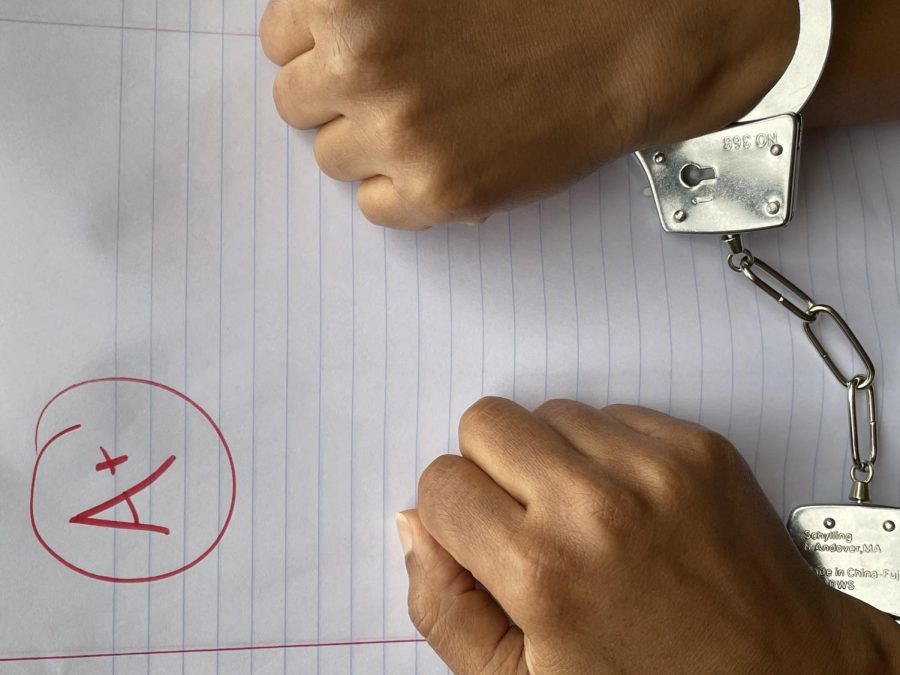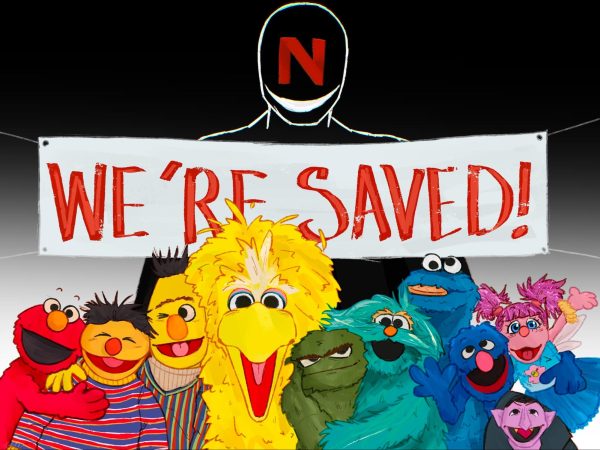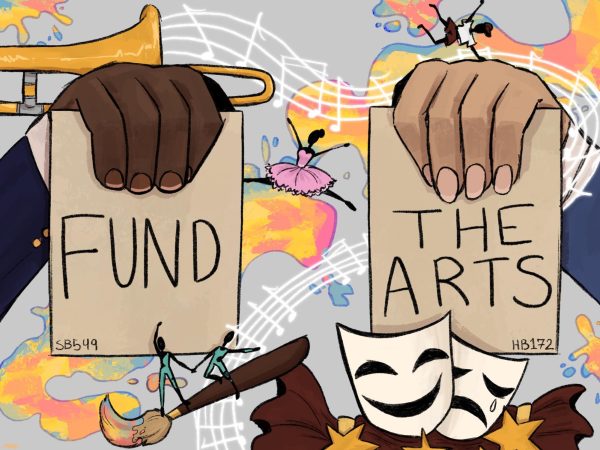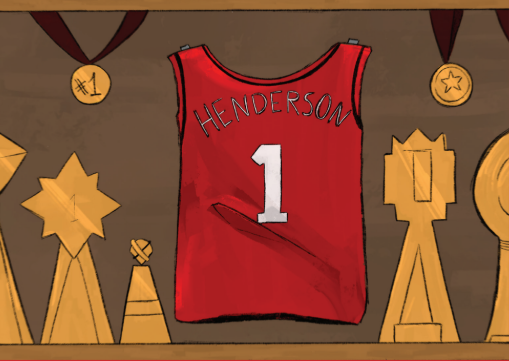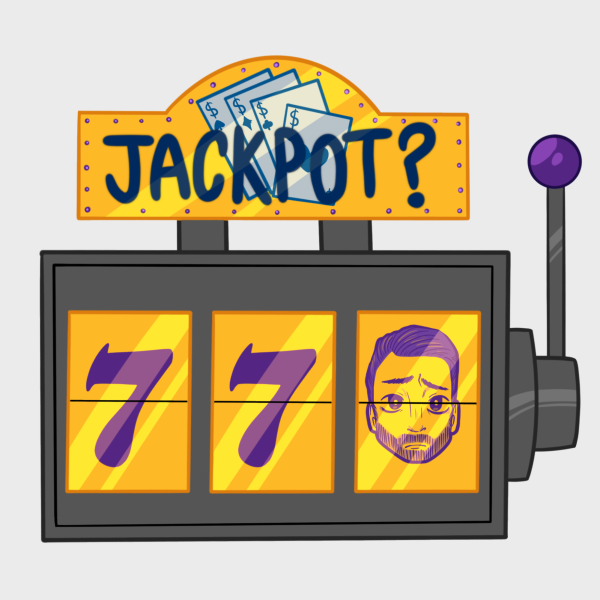‘One size fits all’ approach to punishment not working
How Restorative Justice can fix the school-to-prison pipeline
This image symbolizes the link between education and incarceration.
The children are our future. They are our posterity. Their childhood experiences will determine what they do later in life. Kids need guidance. They need direction. And without that, the chances of them leading a troubled life increases.
When we punish them harshly rather than solve the root of the problem, the behavior becomes exacerbated. Without forgiveness, the effects of their bad decisions will be compounded over time.
Strict school policies make kids feel unseen and unappreciated. They decide to rebel against a system that doesn’t care about their feelings, and only cares about their offense. Children, especially teens, reject education in exchange for freedom from zero-tolerance policies, but that’s a huge cost to pay in the long run. Without an education, kids have fewer job opportunities with high earnings, a lower level of fitness and health, a higher risk of teen pregnancy, and many more short and long-term consequences.
School systems need to handle offenses with more care. Not just being aware of the offense, but being aware of the people involved and the root cause, not the reason, but the flawed fundamental belief that led to the offense.
I believe that restorative justice can reverse the effects of strict school policies.
One school has adopted the new approach, but since 2007, restorative justice has expanded dramatically. Oakland Unified School District cut their suspensions by half in just their first year and increased attendance
But what is Restorative Justice? Well, Restorative Justice is a new form of discipline that repairs harm rather than worsens it. Its principles are (1) Crime causes harm and justice should focus on repairing it, (2) The people most affected by the crime (offenders and victims) should be able to participate in its resolution, and (3) Emphasize accountability, as well as forgiveness.
Each year, more and more kids fall through the cracks and are swept up by the school-to-prison pipeline. The goal of Restorative Justice is to disrupt that vicious cycle and help disadvantaged kids resolve disputes, and create a more united community that doesn’t deal with conflicted kids by just throwing them out.
This district understands the power of collaboration and communication, and HISD should, as well.
According to a January 2021 study, the U.S. is ranked first in the prison population, with a total of 1.8 million prisoners sitting behind bars in 2020. This doesn’t account for the millions more on probation or parole. All of them are housed in thousands of prisons, jails, institutions and facilities, which outnumber the number of colleges and universities in the U.S.
These statistics are closely related to American schools’ high suspension and expulsion rates and in-school arrests. It’s no secret that a lack of education leads to a higher chance of incarceration — according to Stanford University, 68 percent of all males in state and federal prisons don’t have a high school diploma.
These statistics correlate with disciplinary practices that don’t take into account how these minority groups’ disadvantaged backgrounds can affect their attitude or level of commitment to their education. 61 percent of prisoners are Black or Latino, despite them making up only 30 percent of the population. This leads you to believe that minority groups are more impacted by zero-tolerance policies.
School district administrators and policymakers believe that zero-tolerance policies and stricter forms of conduct lead to more disciplined students, but that’s simply not true.
The HISD Bellaire Student Code of Conduct divides offenses into four levels. Each level has harsher punishment than the previous level. However, it doesn’t address the real problem. They don’t try to find the root cause of the student’s disciplinary offenses. The root problem can be troubles at home, peer pressure, pressure from gangs. However, there are signs that HISD is moving in that direction.
“As a district, we are moving towards a more restorative and a less punitive approach to discipline,” Assistant Principal Kori Catlin said. “We’re moving away from just suspending kids and throwing them in detention.”
Catlin is familiar with restorative justice practices and has implemented them. She said that everyone makes mistakes, and those mistakes don’t define a person.
“I think the most important thing to understand is we’re all going to make mistakes,” Catlin said. “We’re all going to do things that aren’t in line with what we’re supposed to do. It’s about having a mentor or someone who can guide you. Working with people so they don’t get in the cycle of making that same mistake.”
Counselors and advisers do implement restorative practices. However, without a structured, collective effort, there won’t be a substantial benefit or result. These experiences can negatively impact the student’s academic and social life, making them harder to approach and work within a classroom setting due to their instincts to challenge the teacher’s methods and class norms because they lived in a challenging household. Every student has their backstories, problems, and issues, and the uniqueness of each student makes a one-size-fits-all approach to discipline effective.
Zero-tolerance policies gained traction as early as the 1980s and became widespread in 1994. After about 40 years of implementation, this dilemma is believed to be too deep-set and complex to solve.
Instead of unforgiving punishments that alienate teens from their classmates and lead them to early involvement with the justice system, RJ solves the problem cooperatively. About 40 percent of expelled students are Black and 70 percent of in-school arrests are of Black and Latino students. Implementations of restorative justice programs into schools as their new conduct policy has led to significant drops in those rates, up to 50%-60% in some instances. In one case, the Oakland Unified School District started looking for an alternative to their zero-tolerance policy in 2005. In 2007, they paired up with the community group Restorative Justice for Oakland Youth (RJOY) and an RJ coordinator to help solve their problem of high suspension/expulsion rates. OUSD completely changed its conduct system and successfully executed it throughout the entire school district using its implementation guide.
According to the HISD website, 209,772 students are enrolled in the district. These issues can lead to risky behaviors that need to be addressed. Restorative justice will bring the students and staff of Bellaire together and mend the bond between the offenders and the offended.
We cannot forget these kids. They are our future. They are our posterity. Their childhood experiences will determine what they do later in life. Let us help our youth the best we can because the mark we leave on them will determine the mark they will leave on the world.
Your donation will support the student journalists of Bellaire High School. Your contribution will allow us to purchase equipment and cover our annual website hosting costs.


